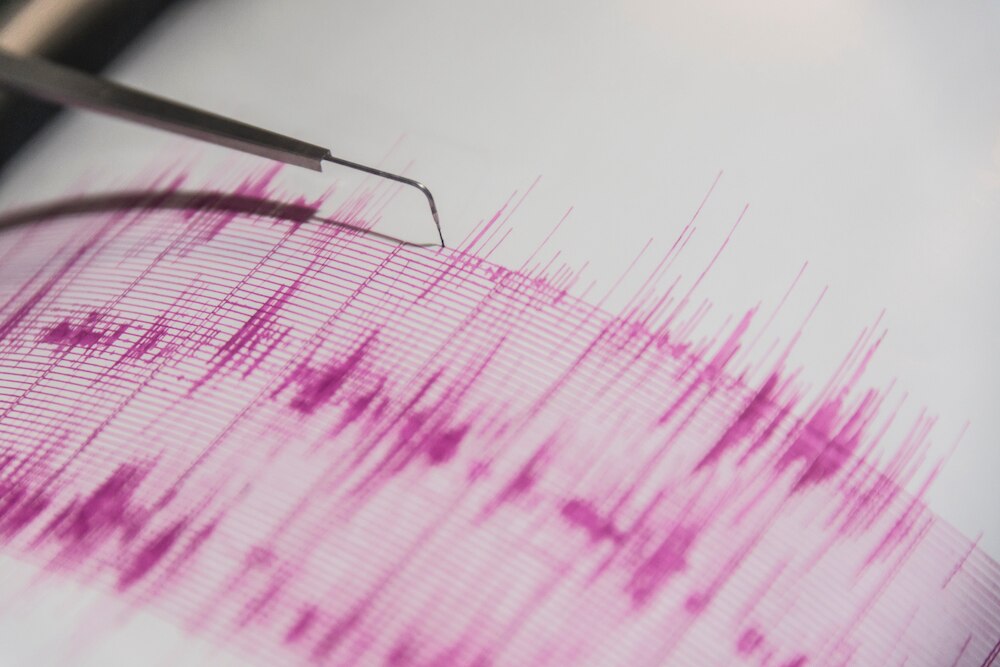Create a free profile to get unlimited access to exclusive videos, sweepstakes, and more!
Injection of fluid into the Earth unlocks new type of slow motion fracking earthquakes
Fracking is bad, but the knowledge scientists gain from it might save lives in the future.

Science is making new discoveries and breakthroughs all the time. New technologies are developed, better instruments are built, and every day we’re adding dimension to our picture of reality. These new discoveries can be less surprising in emerging fields, but you’d think we’d have a lock on the way the Earth behaves. It’s not as if the planet is releasing user interface updates once a fortnight. We’d be forgiven for assuming the earthquakes we have today are the same ones we’ve always had, but we’d be wrong.
In a recent paper published in the journal Nature Communications, Honn Kao from the School of Earth and Ocean Sciences at the University of Victoria in British Columbia, and colleagues, describe a novel type of earthquake resulting from fluid injections at fracking sites.
That the introduction of fluid at hydraulic fracturing (commonly calling fracking) sites can induce earthquakes isn’t news. We’ve known for a while that these facilities produce about as many earthquakes as they do barrels of oil, but the team uncovered a new kind of earthquake associated with fracking activities which had previously escaped our observations.
“Generally speaking, induced earthquakes are not much different from ordinary tectonic earthquakes in terms of their source process,” Kao told SYFY WIRE. “They are mostly characterized by high-frequency signals.”
Those signals are easily captured by standard seismometers, called geophones, used the world over for detecting tectonic activity. Those instruments, however, aren’t very good at detecting low-frequency activity in the ground. For that, the team needed a dense collection of instruments capable of a larger range of measurements, deployed at a place and time where and when tectonic activity was likely to happen. A hydraulic fracturing site fit the bill perfectly.
Researchers placed an array of eight broadband seismometers within a few kilometers of the fracturing site in Western Canada and took measurements over the course of a few weeks.
“This dense array was able to detect about 350 earthquakes during the operation and immediately afterward. What’s interesting is about 10% of these events showed seismic waveforms which are significantly different from those of typical induced events,” Kao said.
Analysis of the data showed waveforms in two parts. The first was high-frequency and not very different from typical earthquakes. The second was low-frequency and much longer lived, lasting about 10 times longer than typical earthquakes. Because of the split nature of the waveforms, scientists dubbed these unusual quakes Earthquakes Characterized by Hybrid Frequency Waveforms (EHW).
This sort of induced tectonic activity can manifest in a couple of ways. We get these sorts of low-frequency slow burns, which are less aggressive but last longer, but the same activity can trigger larger earthquakes down the line. When fluid is injected into rock matrix, it causes a deformation of the structure which can quickly spread out from the fracturing site. When the added stress reaches a preexisting fault line, earthquakes can occur. This likely represents a transition from aseismic deformation — deformation with no associated seismic signal — to seismic deformation, which is typically associated with earthquakes.
“The EHWs perhaps represent a different kind of triggering mechanism,” Kao said. “In other words, the occurrence of these events probably means there was preexisting aseismic loading which is increased by the injection and eventually pushes the rock matrix into seismic mode. This transition is manifested by the occurrence of EHWs.”
While the ethics of hydraulic fracturing are an ongoing matter of debate, they do provide an opportunity for scientists to gain a fuller understanding of tectonic activities, both at the surface and deep within the Earth. Moreover, scientists believe they might be able to use these findings to make adjustments in fracturing operations which could mitigate some of the risks.
“If the industry can control the injection operation such that the mechanical status or response of the system can be maintained at the aseismic regime, or at the EHW, then we can greatly reduce or totally eliminate the potential seismic hazards from injection-induced earthquakes at the source,” Kao said.
The benefits could also extend beyond fracturing sites to the wider world. It’s likely these sorts of transitionary phases are also occurring below the surface, leading to natural earthquakes. Studying those transitions is challenged by the location of the activity tens of kilometers underground, and because accurately predicting the time and place of earthquakes is difficult.
“With induced earthquakes, we know exactly when and where the injection operation will take place next time. The implication is with more understanding of the transition from aseismic to seismic activity, the lessons we learn can probably apply to the processes associated with natural earthquakes,” Kao said.
That knowledge might contribute to the development of more robust models for short-term earthquake forecasts and give us a better early warning system for future quakes.


























